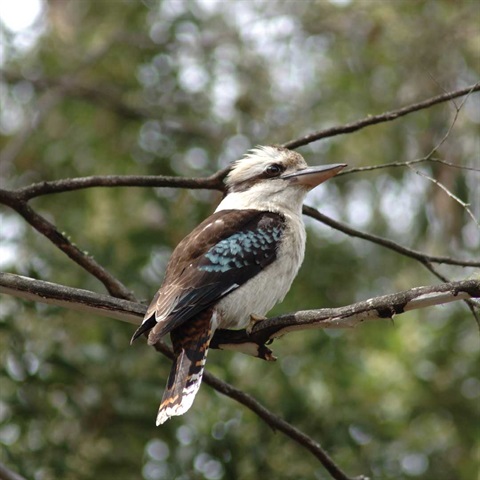Attracting Wildlife

Gardens provide vital habitat for continued survival of fauna such as birds, lizards, possums, frogs and beneficial insects in the urban environment. They provide shelter, food, nesting sites, and link corridor areas necessary for survival of species.
Tips for best garden design include recreating an ecosystem using original layers of vegetation to appropriate height including small trees, shrubs and groundcovers, and also providing rocks, logs and mulch. The more you add, the more likely you are to attract more species.
Why should you choose local native plants in your garden?
- Assist in pollinating native plants in the area
- Attract beneficial insects including pollinators and pesteating insects
- Exchange fruits and seeds with nearby bushland
- Keeps soils healthy through aeration, and balanced nutrients from leaf litter
- Supports wildlife in local area.
Simple guide to useful habitats
A diversity of native plants creates more opportunities for native fauna to find food and shelter suitable to their needs.
Vegetation layers
- Canopy (trees, for example with hollows): provide food or protection for example insects, larger birds, possums and bats
- Mid-storey (small trees, large shrubs, tree-ferns): when planted densely, provide food or protection for example insects, birds, possums and tree-frogs
- Under-storey/ground covers (eg small shrubs, climbers, scramblers, ferns, herbs, grasses): provide food or protection for example insects and other invertebrates, frogs, lizards, small marsupials, and small birds.
Include a bird bath
Birth baths are easy to install, clean and attract birds, possums, lizards, etc. depending on their height and accessibility. They are a great alternative to feeding if you wish to observe birds in your garden.
Fresh water to drink or bathe in is most welcome on hot days, in times of draught and when there is no clean drinking water nearby. Just clean the receptacle without chemicals and change the water regularly.
Structural
- Mulch (layer of leaf litter and twigs): provide food or protection for example insects and other invertebrates, frogs and lizards (which in turn provide food or protection for example birds and promotes healthy soil)
- Logs, rocks and crevices: provide food or protection for example insects and other invertebrates, frogs, lizards
- Pond, dam: provide food or protection for example aquatic insects and other invertebrates, fish, frogs, lizards and also drinking water for birds and other fauna.
Shelter and Nesting
- Tree hollows are important habitats for fauna and can provide a landscaping feature in your garden
- Assisting wildlife with built habitats such as nesting boxes is important as many animals have had their natural habitats for example tall trees removed or destroyed
- Nesting boxes lessen the need for example possums to entering your roof!
- Do not over clear your garden
- Leaf litter, twigs, fallen branches and logs left on the ground provide valuable habitat and shelter for fauna. This material also provides great mulch for keeping weeds down and helping with water retention.
Installing a Pond in Your Garden
- Let tap water sit for at least one week in the open before adding plants or fauna
- Create an island in the pond from which wildlife can drink safe from predators
- Vary the depth and add a branch at the edge into the pond to assist wildlife to get in and out
- Ensure there is some shading from the sun. Shrubs planted in close proximity to the pond further assist with protection
- Position away from windows – frogs can get noisy!
Healthy Fauna
- Do not feed wildlife processed or non-native foods. Processed (or man made foods) such as bread contain for example high levels of cane sugar which leave wildlife susceptible to many deadly diseases, and do not provide a balanced diet. Plant native plants within the garden which provide native foods instead.
- Minimise the use of man-made pesticides. Fauna that eat poisoned insects build up fatty reserves of these chemicals internally, which can kill or severely harm these animals. Snail baits also kill Blue-tongue Lizards. Choose natural or organic fertilisers over chemicals.
- Put a bell-collar on your cats and keep them indoors from just before dark to mid-morning as these are the times that cats are most likely to be active hunting native animals such as birds, lizards and frogs. Also consider installing an enclosed cat run in your backyard to responsibly manage the cat threat to native wildlife. Ensure your dog is also responsibly managed to prevent it hunting and/or disturbing wildlife such as wild ducklings.
- Do not leave pet bowls with food outside. This encourages feral birds and animals such as Common (Indian) Mynas, feral and domestic cats, foxes and rodents.
- Noisy Miners and Currawongs are in unnaturally high numbers and should be discouraged from gardens. They are aggressive species that attack other bird species in their territory. To discourage these species, avoid planting hybrid grevilleas, which provide nectar for the Noisy Miner, and avoid planting too many berry producing plants, which provide berries for Currawongs.